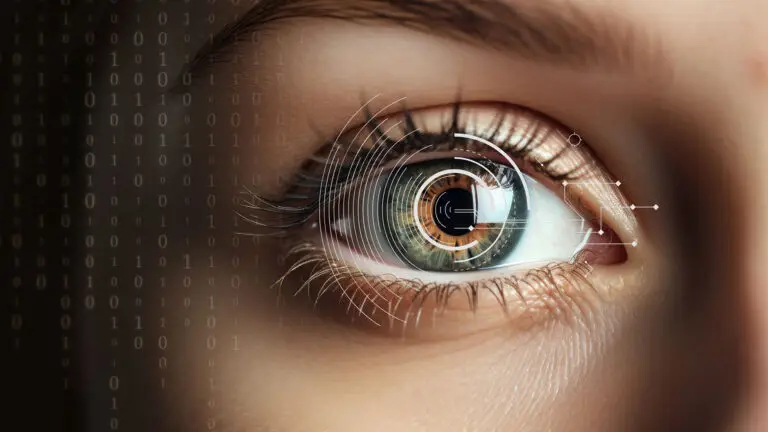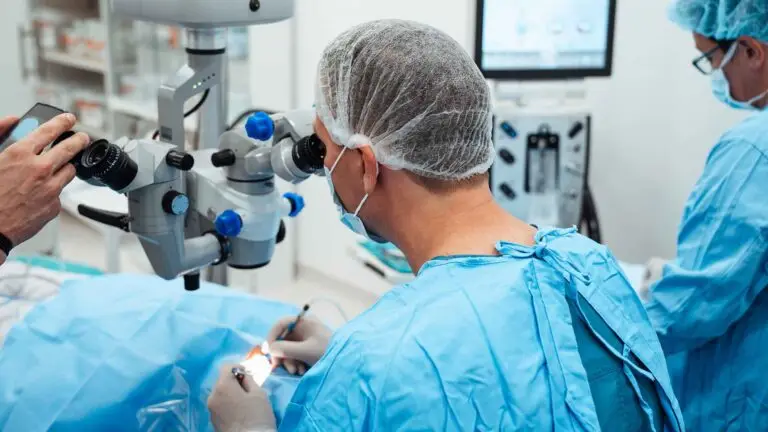
- Medically Reviewed by Mr Mfazo Hove Consultant Ophthalmologist
- Author: Chris Dunnington
- Published: November 5, 2024
- Last Updated: October 8, 2025
At Blue Fin Vision®, our premier eye clinic in London, we frequently encounter patients seeking information about keratoconus. This complex eye condition can significantly impact vision and quality of life. In this comprehensive guide, we’ll explore what keratoconus is, its causes, symptoms, and available treatment options, including advanced surgical techniques.
Understanding Keratoconus
Keratoconus is an eye condition characterised by the thinning and weakening of the cornea, the clear, dome-shaped front surface of the eye. As the cornea weakens, it begins to bulge outward into a cone-like shape, distorting vision.
Key Facts About Keratoconus
- Typically develops in teenagers or young adults.
- The condition often progresses gradually over time.
- Usually affects both eyes, though one eye may be more severely impacted than the other.
- While it can cause significant vision impairment, keratoconus does not lead to blindness.
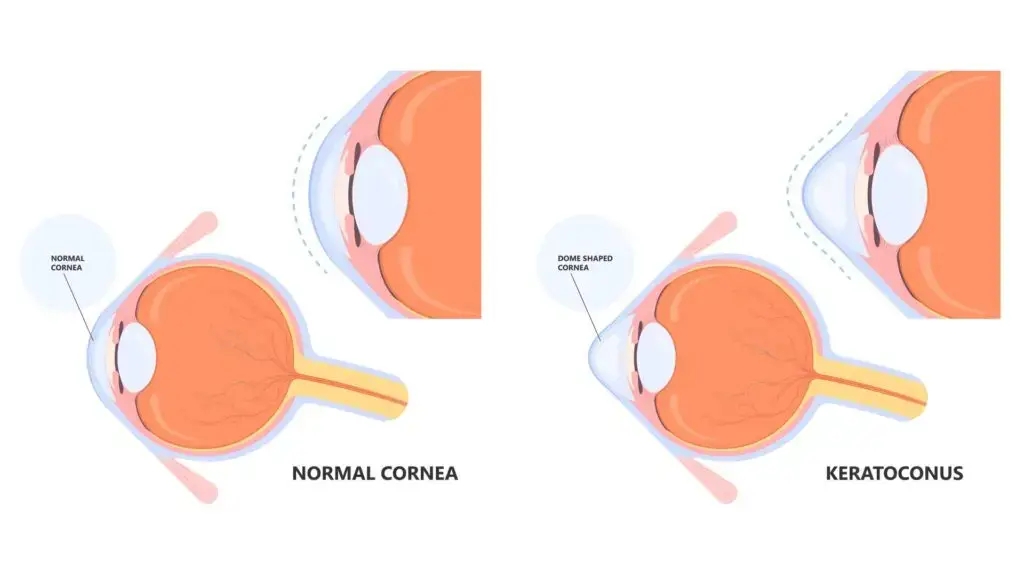
Causes and Risk Factors of Keratoconus
The exact cause of keratoconus remains unknown, but research suggests that both genetic and environmental factors play a role. Some key risk factors include:
- Family History: Having a close relative with keratoconus increases your risk.
- Genetics: Certain genetic factors may predispose individuals to develop keratoconus.
- Eye Rubbing: Excessive eye rubbing has been strongly linked to keratoconus development and progression.
- Allergies: Individuals with allergic conditions like hay fever, asthma, and eczema may be at higher risk.
- Ethnicity: Some studies suggest that keratoconus may be more common in certain ethnic groups.
At Blue Fin Vision®, our expert ophthalmologists take a comprehensive approach to assess your individual risk factors during thorough eye examinations.
Symptoms of Keratoconus
Keratoconus symptoms can vary depending on the stage and severity of the condition. Common signs include:
- Blurred or distorted vision.
- Increased sensitivity to light and glare.
- Frequent changes in eyeglass prescription.
- Difficulty driving at night.
- Eye strain or headaches.
- Cloudy or clouded vision.
It’s crucial to understand that keratoconus symptoms often develop gradually. By the time noticeable symptoms occur, significant changes to the cornea may have already taken place. This underscores the importance of regular eye check-ups at a reputable eye clinic like Blue Fin Vision® in London.
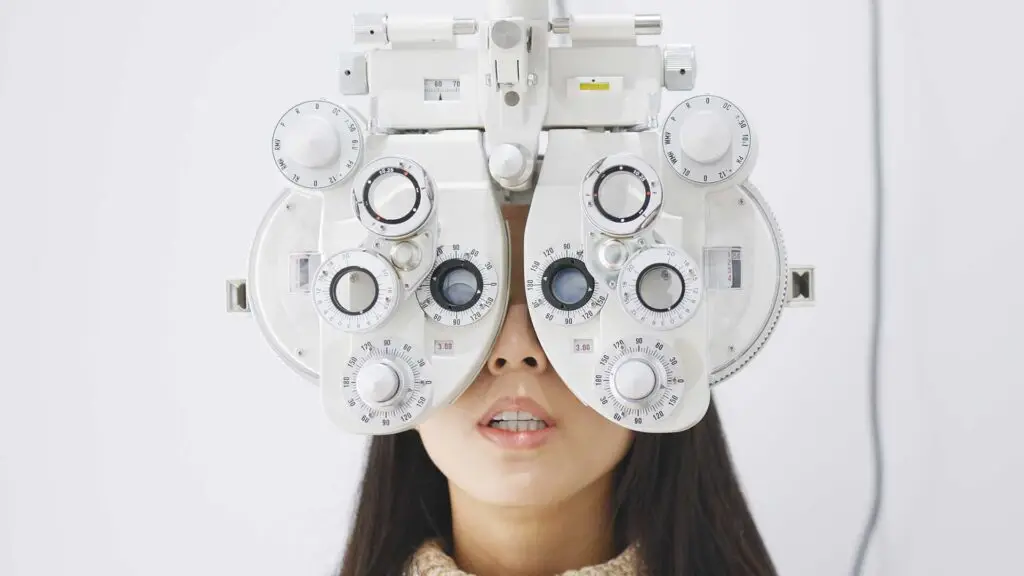
Diagnosing Keratoconus
At Blue Fin Vision®, we use state-of-the-art technology to diagnose keratoconus early. Our comprehensive screening process includes:
- Visual Acuity Tests: To assess the clarity of your vision.
- Refraction: To determine your eyeglass prescription.
- Slit-Lamp Examination: To examine the structure of your cornea.
- Corneal Topography: A non-invasive imaging technique that creates a detailed 3D map of your cornea’s surface.
- Pachymetry: To measure the thickness of your cornea.
Early detection through these advanced diagnostic techniques allows us to start treatment promptly, significantly improving outcomes for our patients.
Treatment Options for Keratoconus
Non-Surgical Treatments
- Corrective Lenses: Glasses or specially designed contact lenses for early-stage keratoconus.
- Corneal Cross-Linking (CXL): A procedure to strengthen the cornea and prevent progression.
- Intacs: Small implants inserted into the cornea to help flatten the bulge.
Surgical Management of Keratoconus
For advanced cases, surgical interventions may be necessary:
- Corneal Allogenic Intrastromal Ring Segments (CAIRS)
CAIRS is an innovative surgical technique for keratoconus treatment. While we don’t offer this procedure at Blue Fin Vision®, we can refer suitable candidates to specialists who perform it.
CAIRS Procedure:
- Donor corneal tissue segments are implanted into the patient’s cornea
- Helps reshape and strengthen the cornea
- Less invasive than a full corneal transplant
Risks:
- Infection
- Corneal scarring
- Implant extrusion
- Deep Anterior Lamellar Keratoplasty (DALK) (*B)
DALK is a partial-thickness corneal transplant procedure.
DALK Procedure:
- Removes and replaces the front layers of the cornea
- Preserves the patient’s own endothelium (inner layer)
- Reduces risk of rejection compared to full-thickness transplant
Risks:
- Infection
- Graft rejection (though less common than with a full-thickness transplant)
- Irregular astigmatism
- Penetrating Keratoplasty (PK)(*A)
PK is a full-thickness corneal transplant, used in the most advanced cases.
PK Procedure:
- Replaces the entire thickness of the cornea with donor tissue
- Used when other treatments are not suitable
Risks:
- Higher risk of graft rejection
- Infection
- Glaucoma
- Cataracts
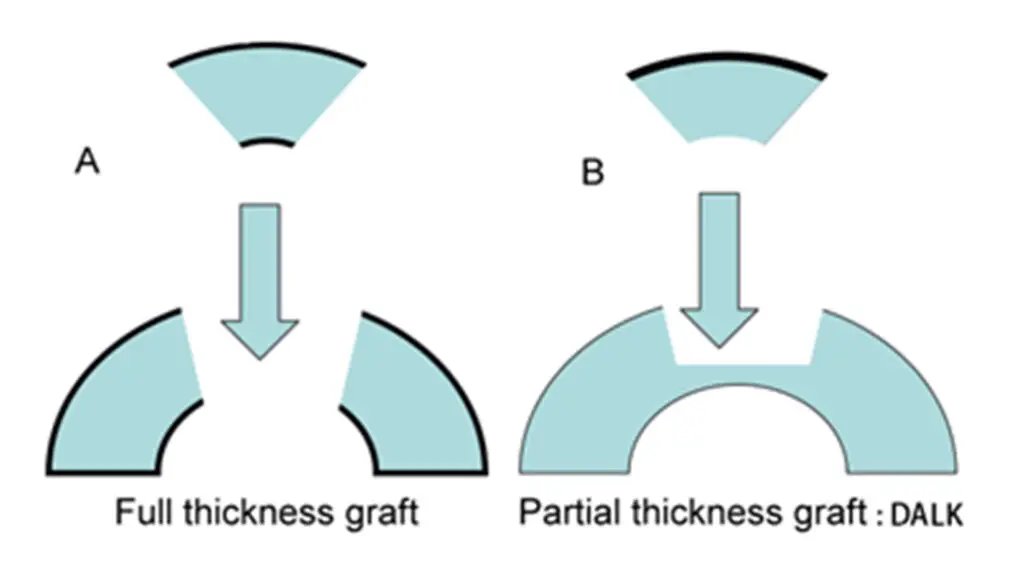
Living with Keratoconus: Tips and Advice
Being diagnosed with keratoconus can be concerning, but with proper management, most people maintain good vision and quality of life. Here are some tips for living with keratoconus:
- Attend regular eye check-ups to monitor the progression of the condition.
- Follow your treatment plan diligently.
- Avoid rubbing your eyes.
- Manage allergies effectively to reduce eye irritation.
- Protect your eyes from UV radiation by wearing sunglasses.
- Consider joining a support group to connect with others living with keratoconus.
The Importance of Early Detection and Treatment
Early detection and treatment of keratoconus are crucial for preserving vision and preventing the need for more invasive treatments. Regular eye examinations, especially for those with risk factors, can help catch keratoconus in its early stages when it’s most manageable.
Why Choose Blue Fin Vision® for Keratoconus Care?
At Blue Fin Vision®, our London eye clinic offers:
- Expert Care: Our team of specialist ophthalmologists are leaders in keratoconus management.
- Advanced Technology: We use the latest diagnostic and treatment technologies.
- Personalised Treatment: Each patient receives a tailored care plan.
- Comprehensive Support: From diagnosis through to long-term management.
- Convenient Location: Our clinic is easily accessible in central London.
Conclusion: Taking Control of Your Eye Health
Keratoconus may be a complex and potentially serious condition, but with early detection and proper treatment, its impact on your vision can be minimised. At Blue Fin Vision®, we’re committed to providing the highest standard of care for keratoconus patients.
Don’t wait for symptoms to worsen – regular eye check-ups are crucial for detecting keratoconus in its early stages. If you’re concerned about keratoconus or it’s been a while since your last eye examination, we encourage you to book an appointment at our London eye clinic.
Remember, your vision is precious. Trust the experts at Blue Fin Vision® to provide comprehensive, state-of-the-art care for all your eye health needs, including keratoconus management. Contact us today to schedule your eye examination and take the first step towards protecting your vision for years to come.

